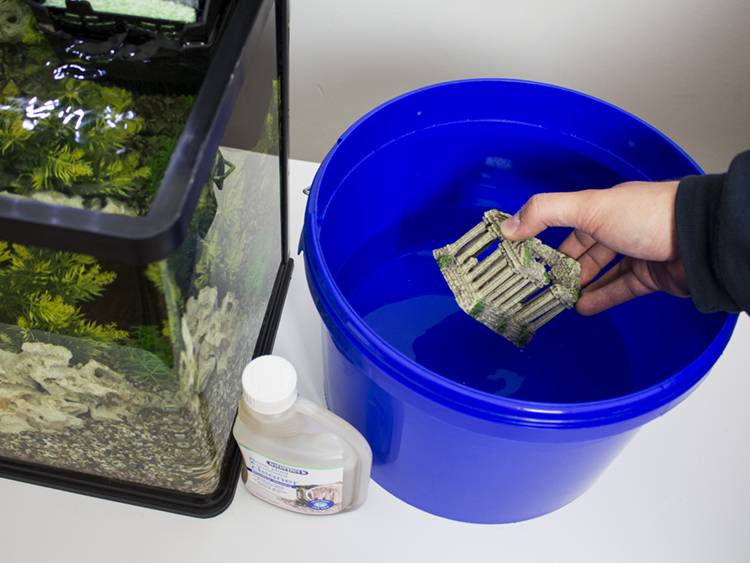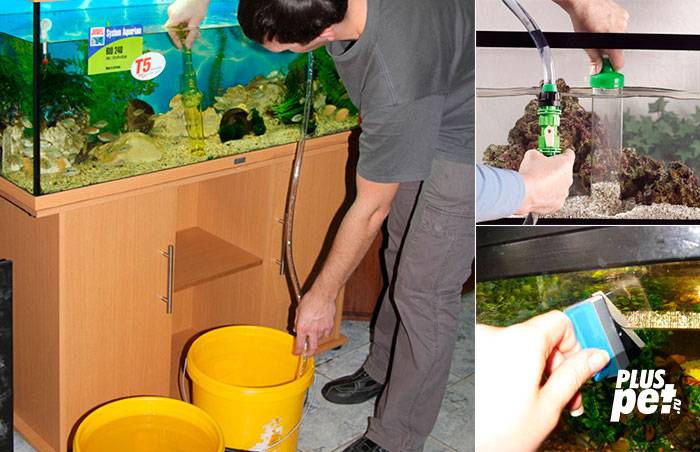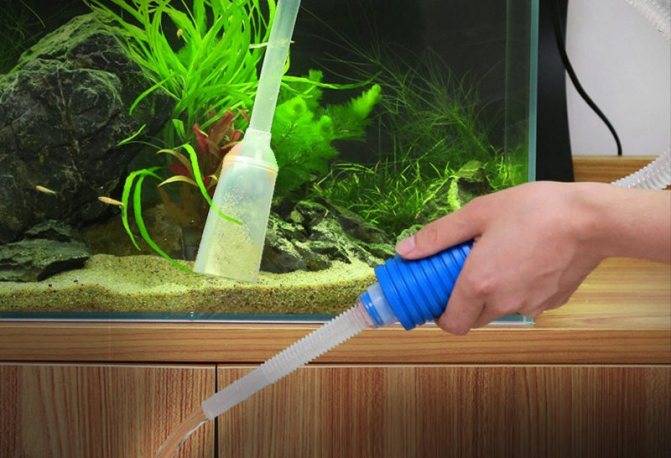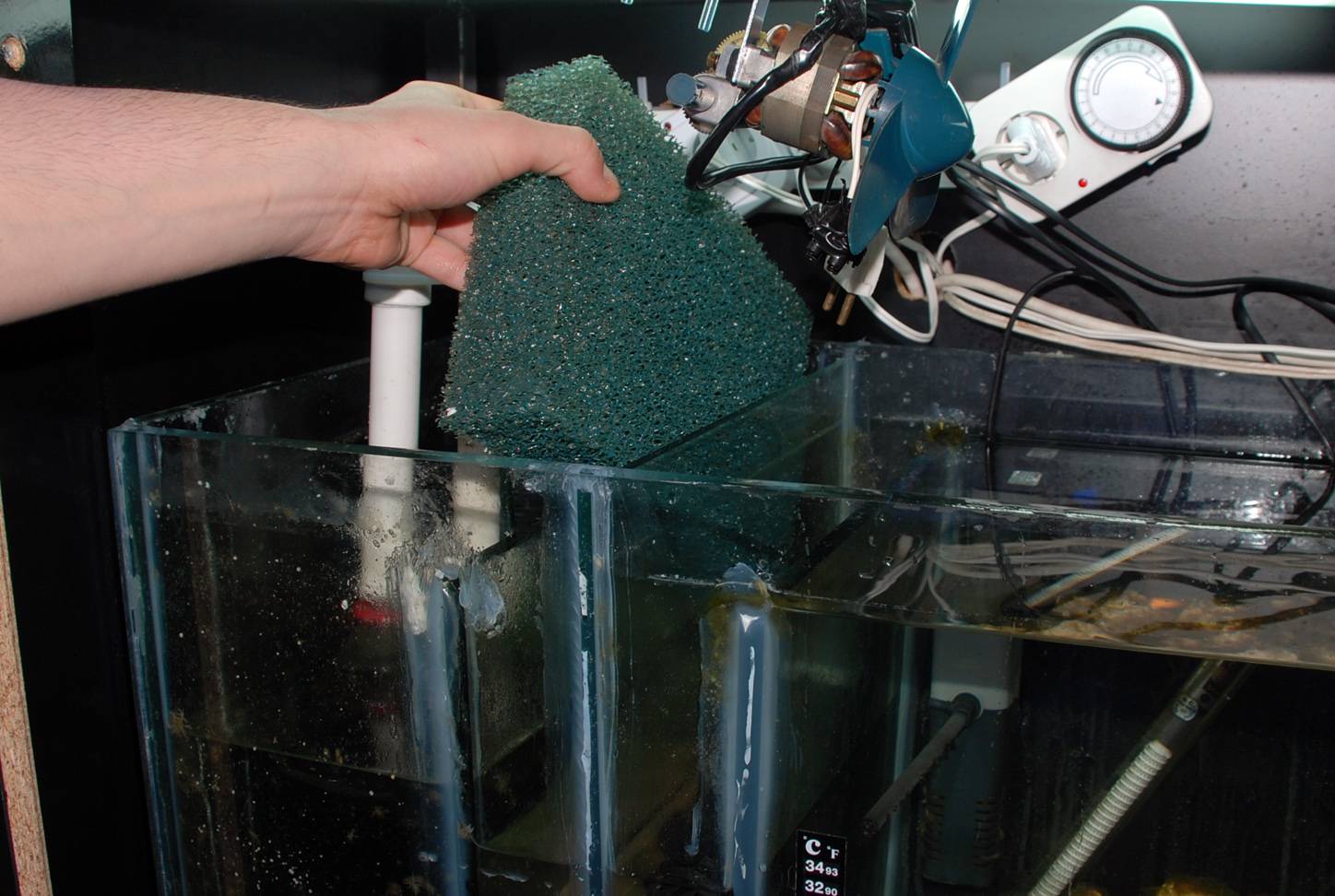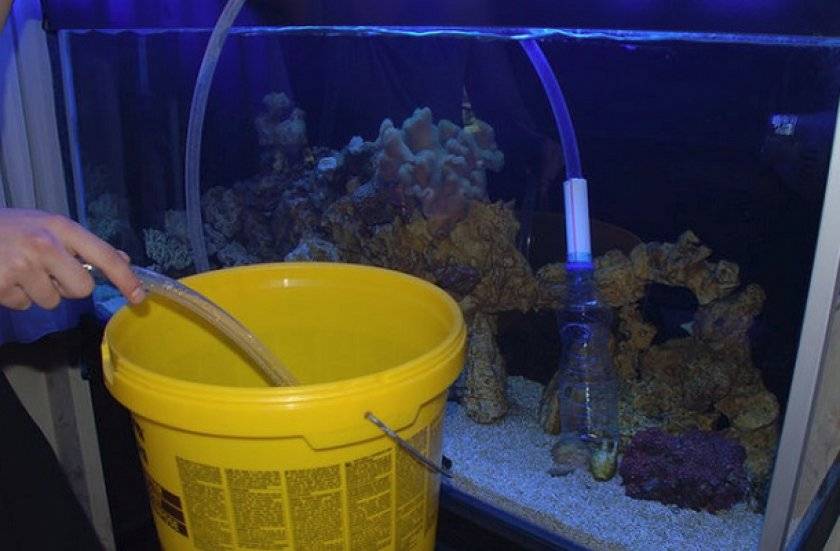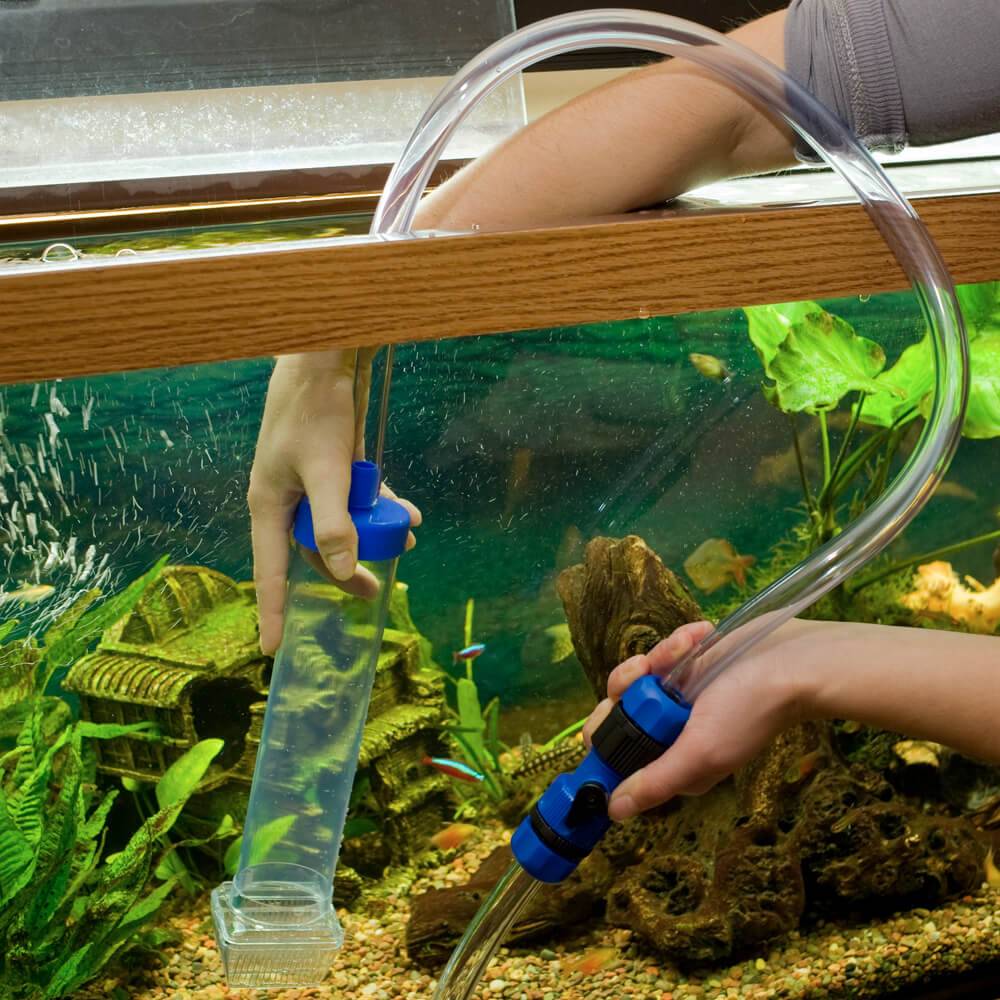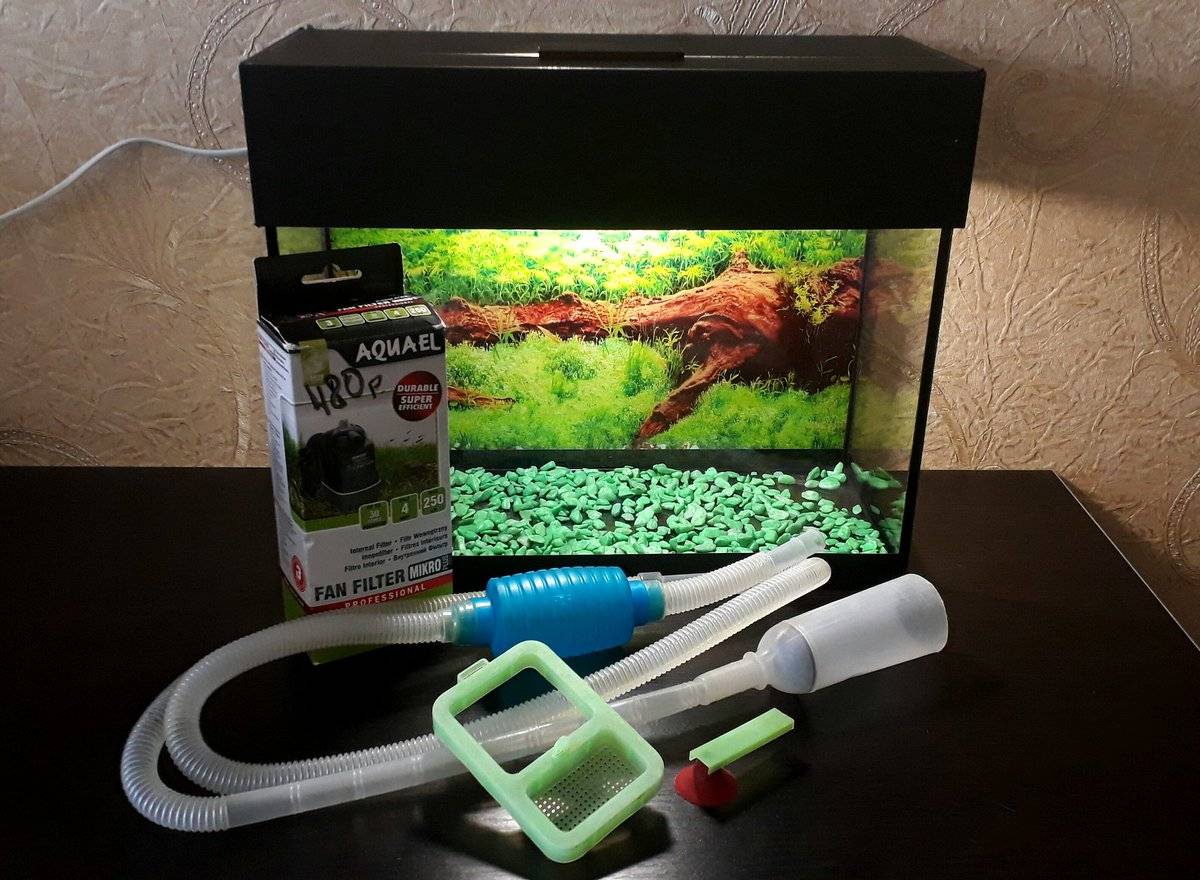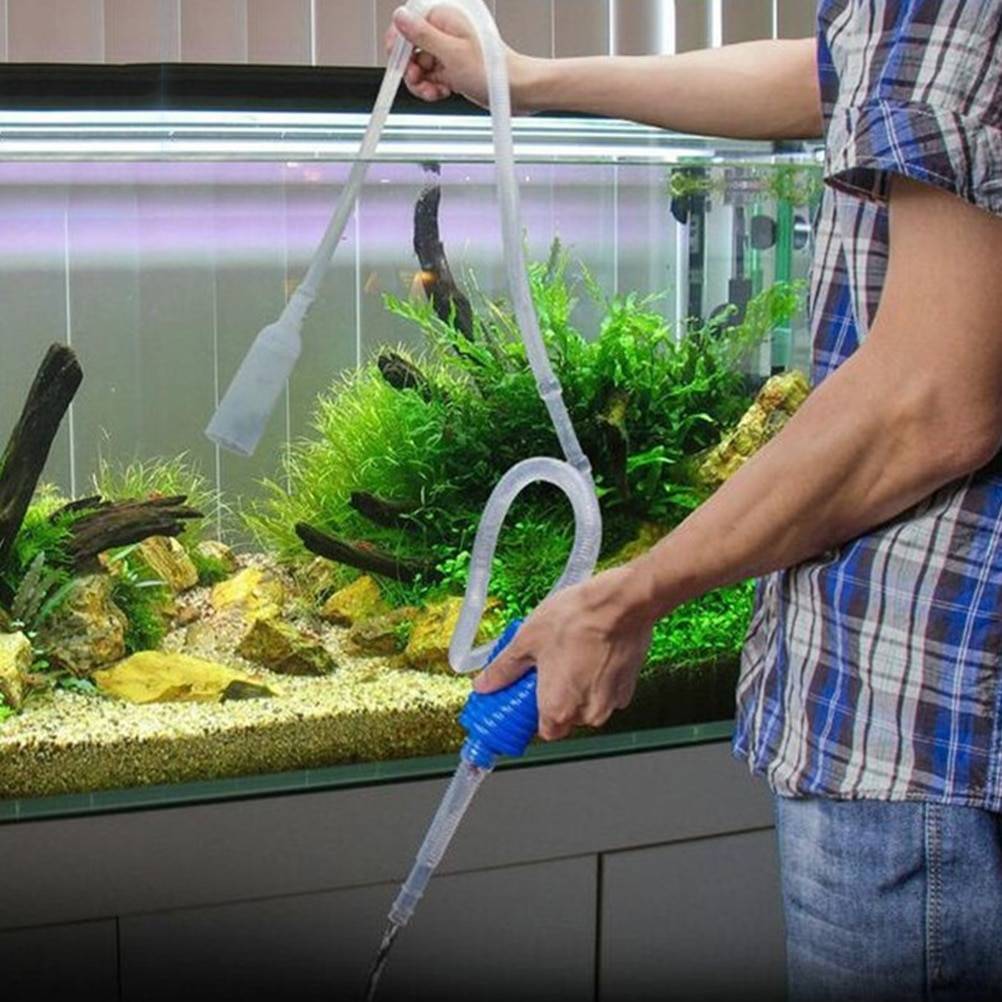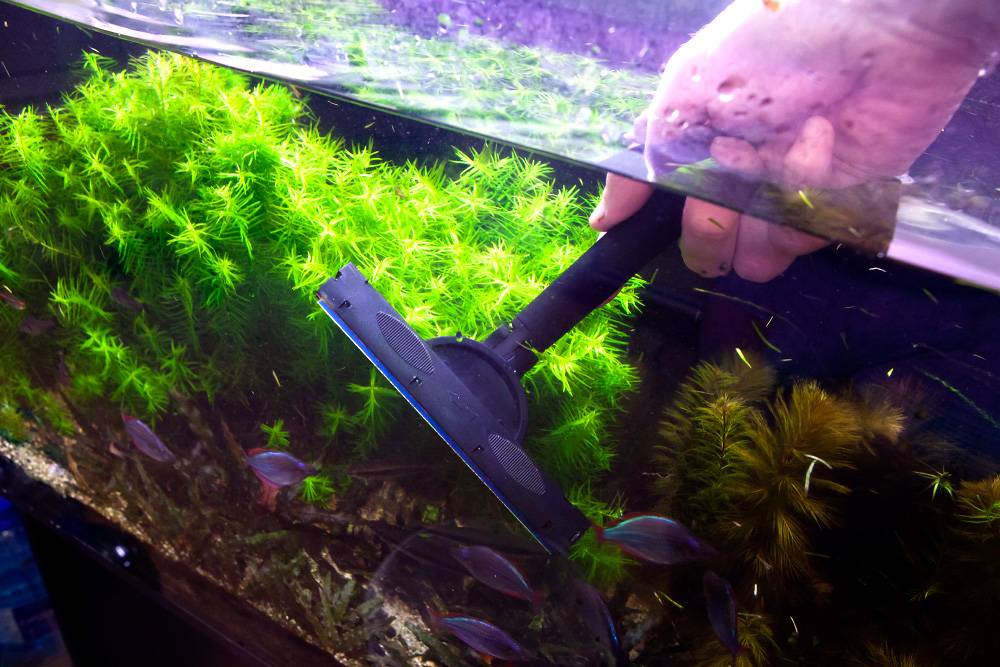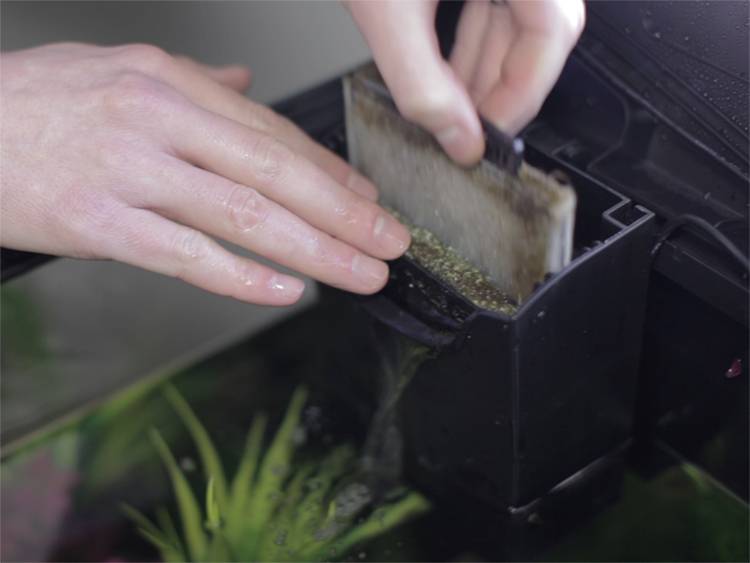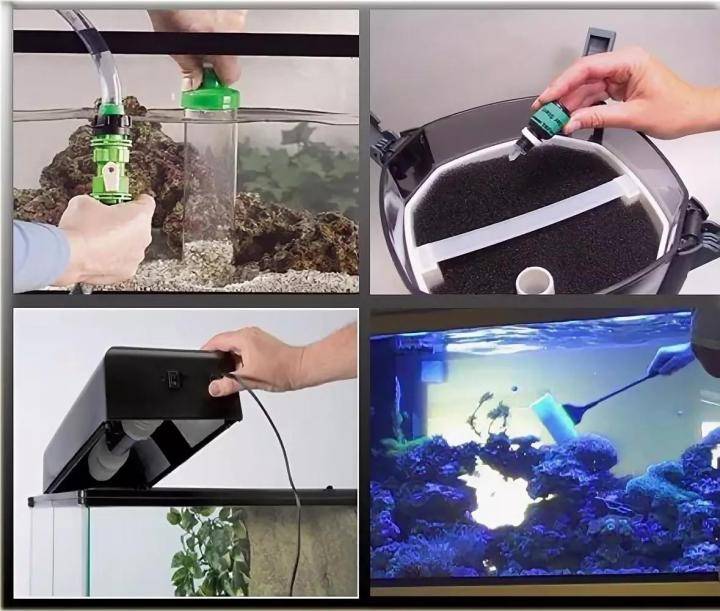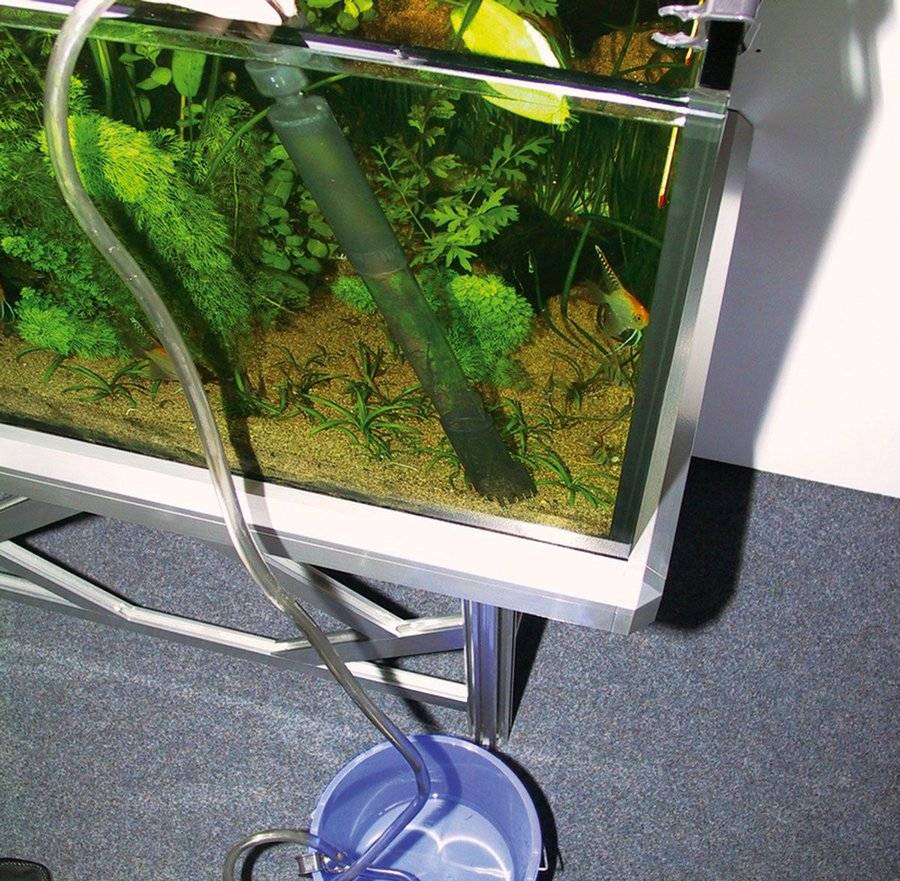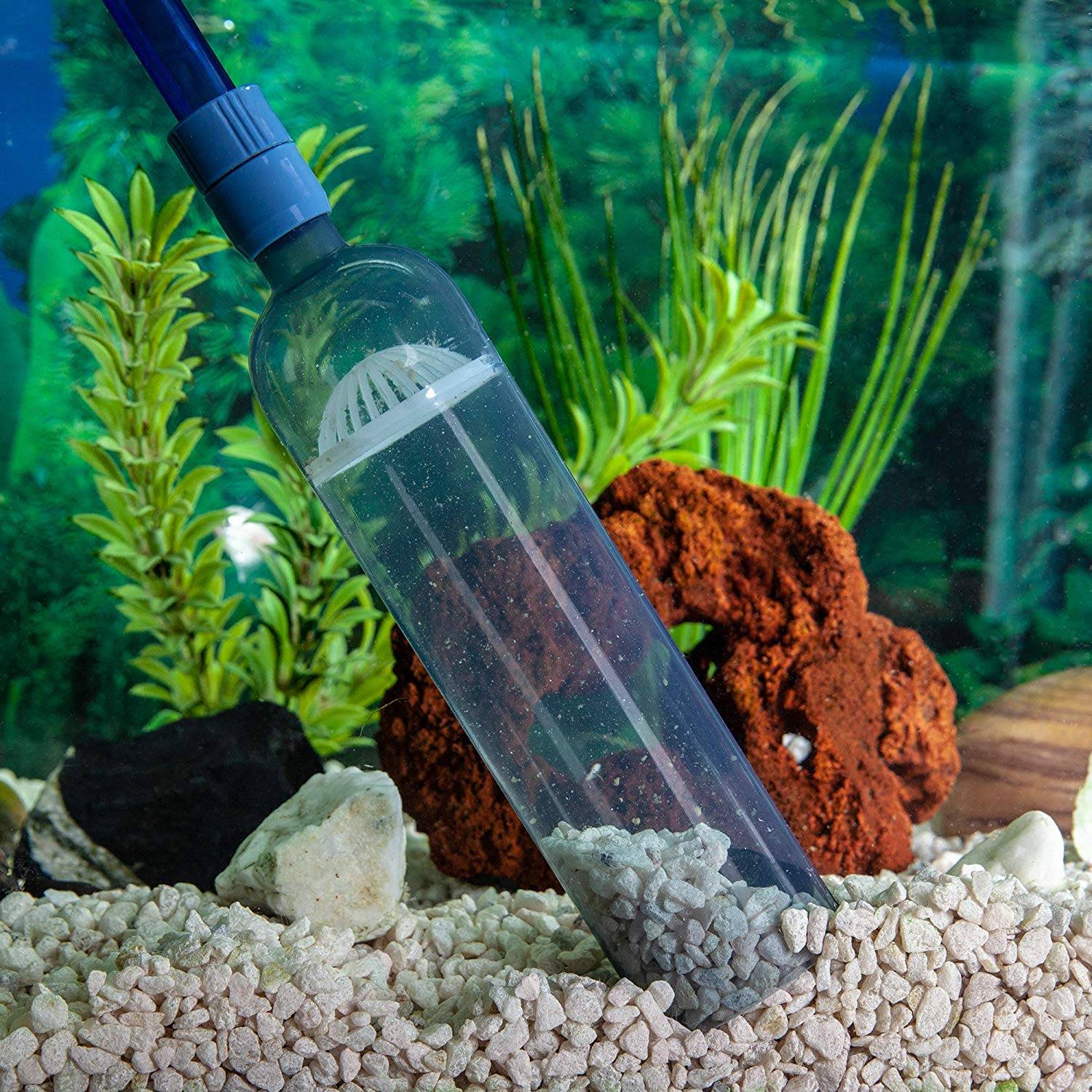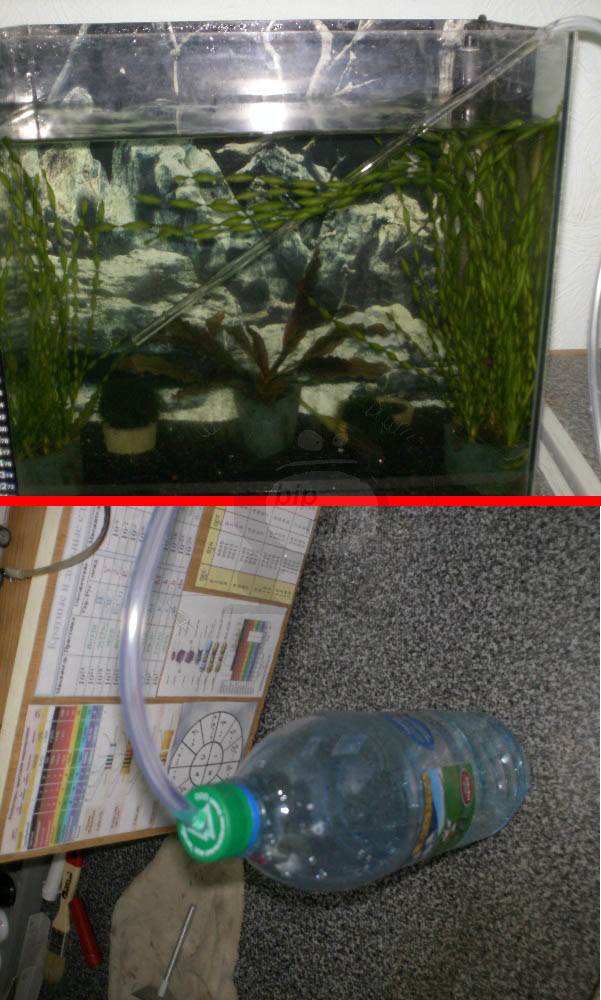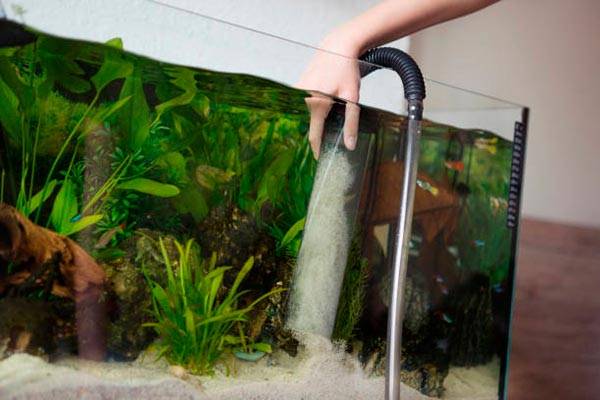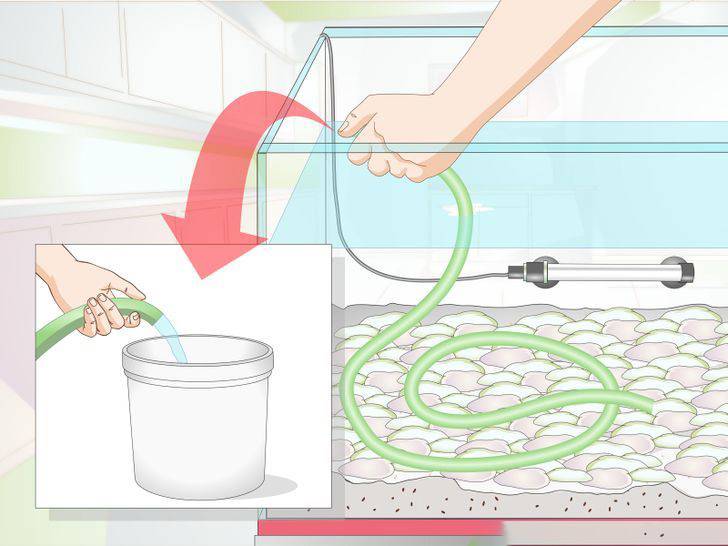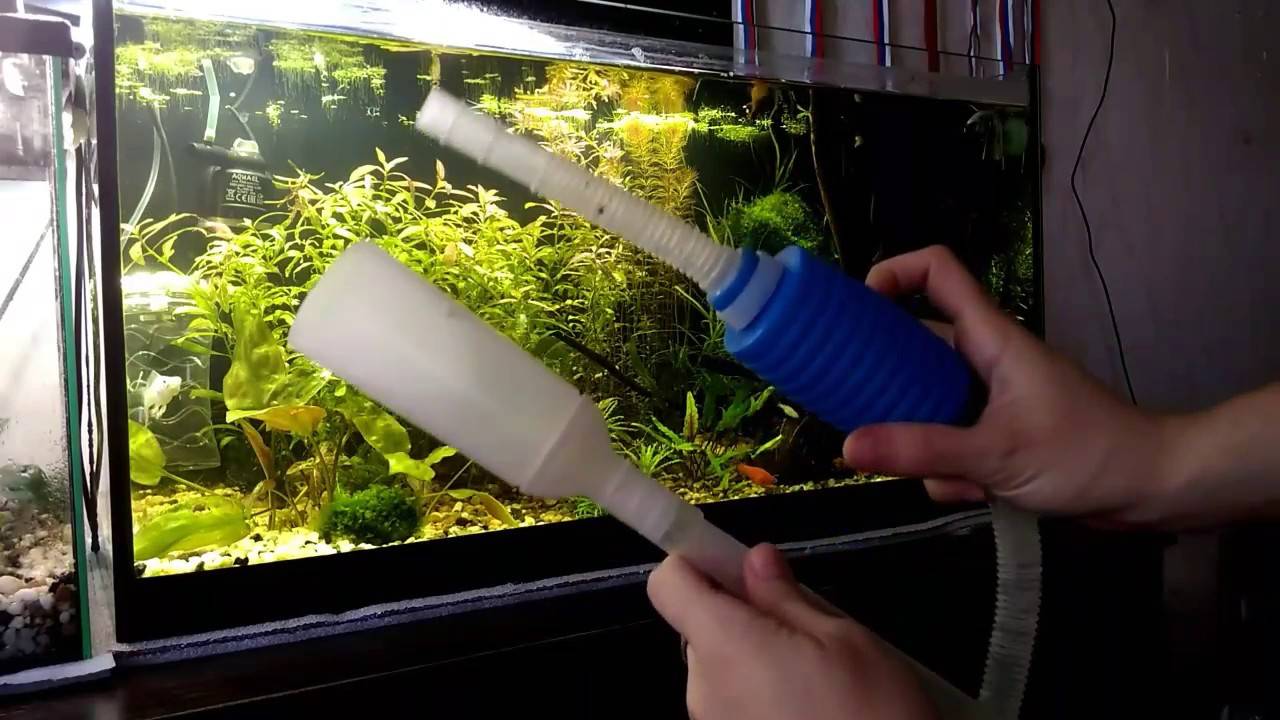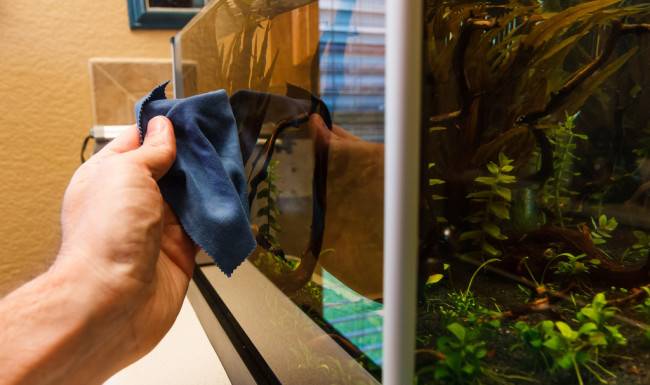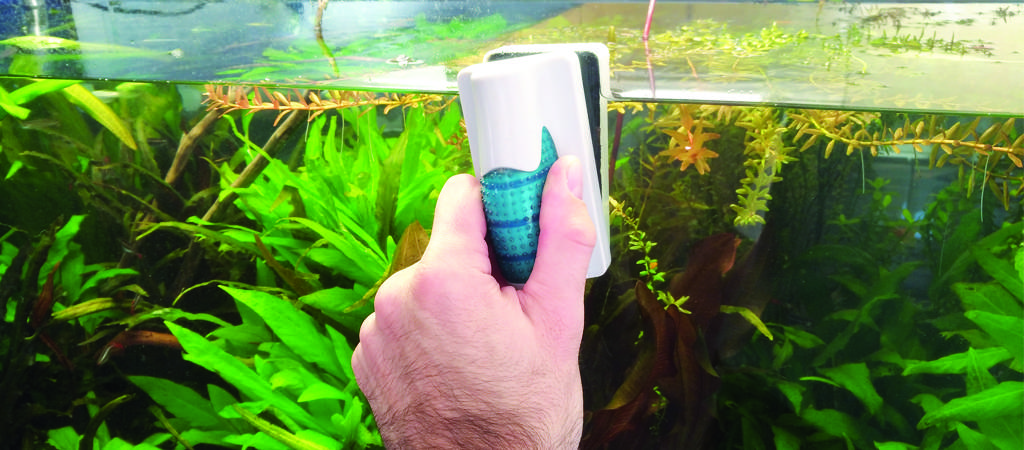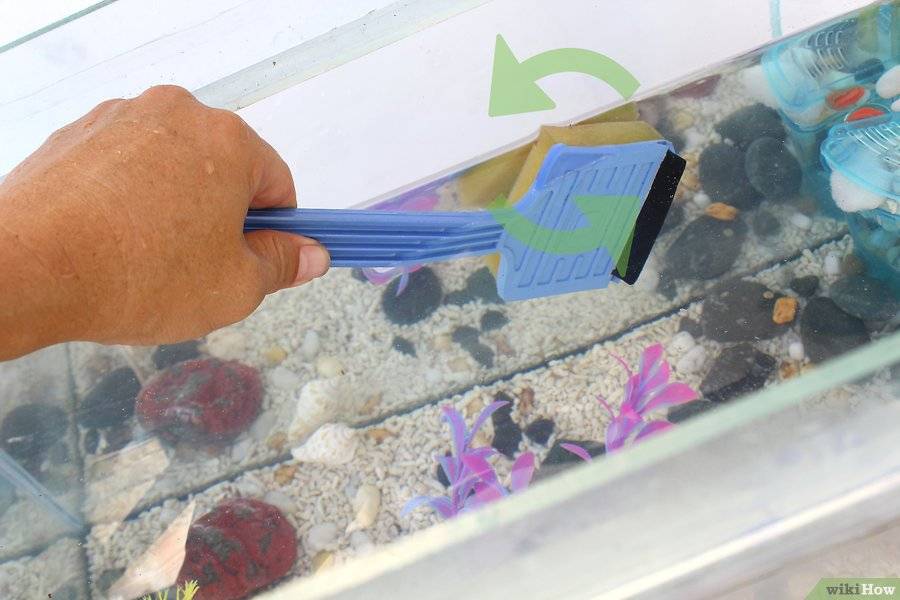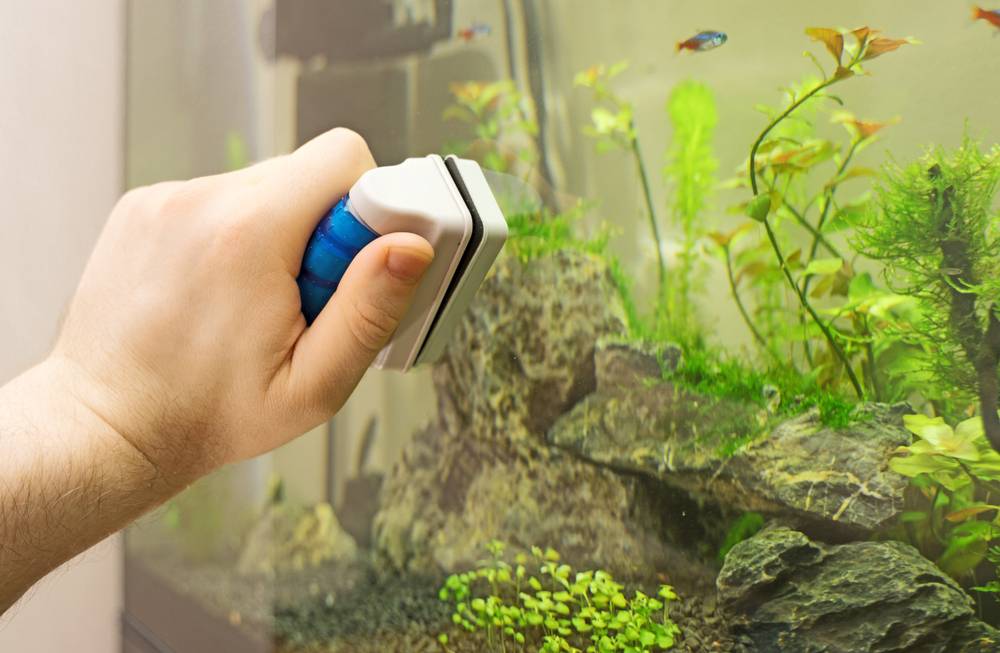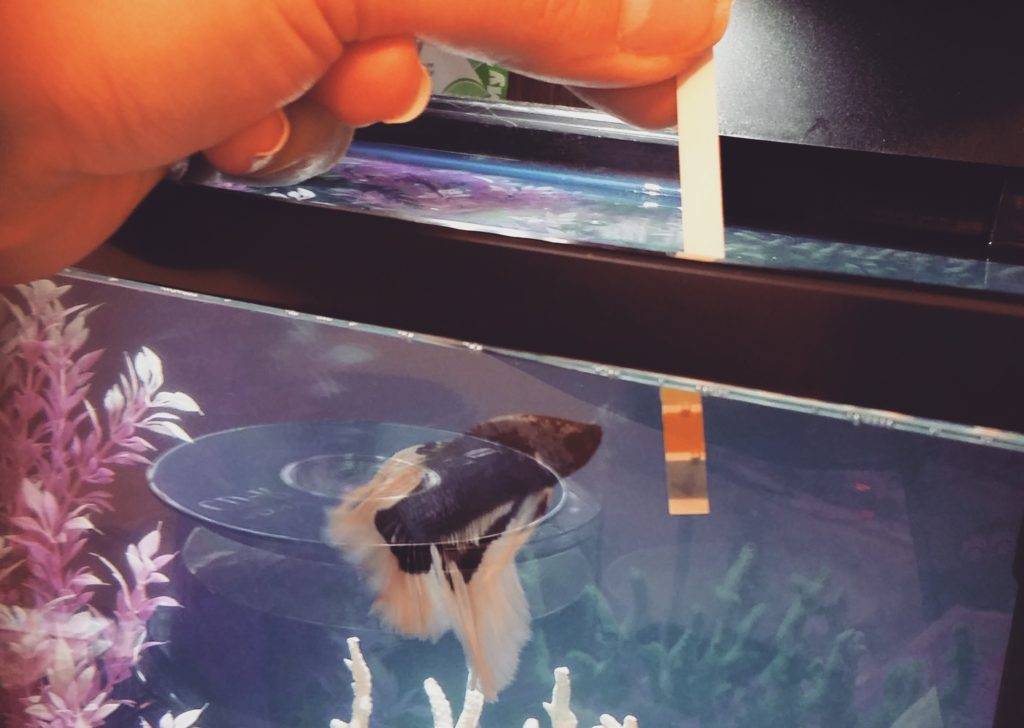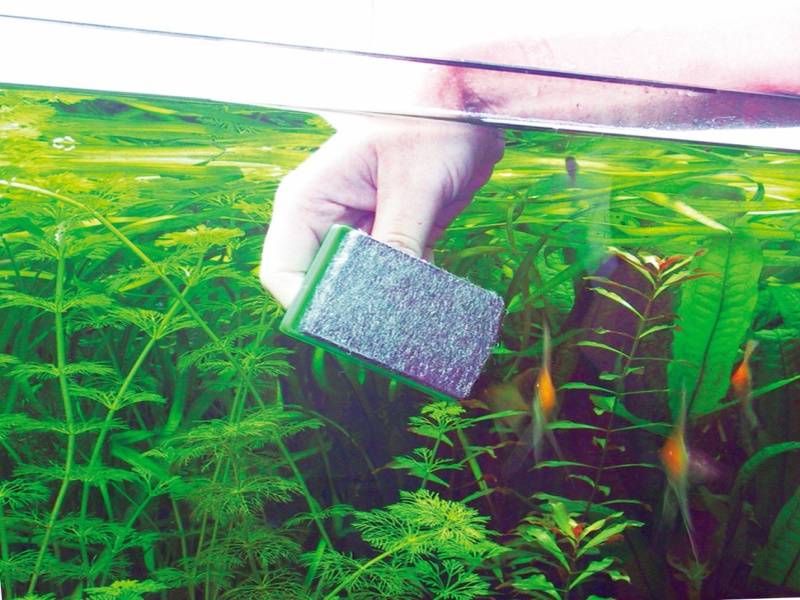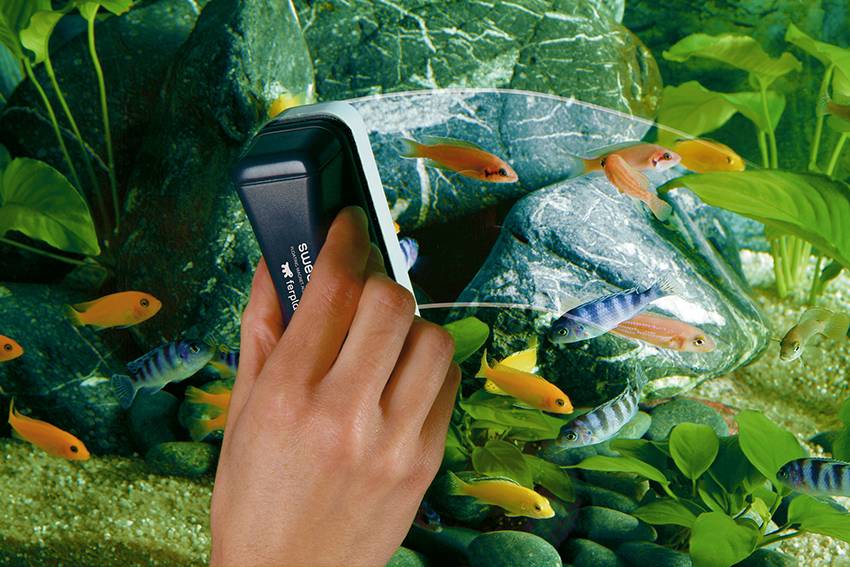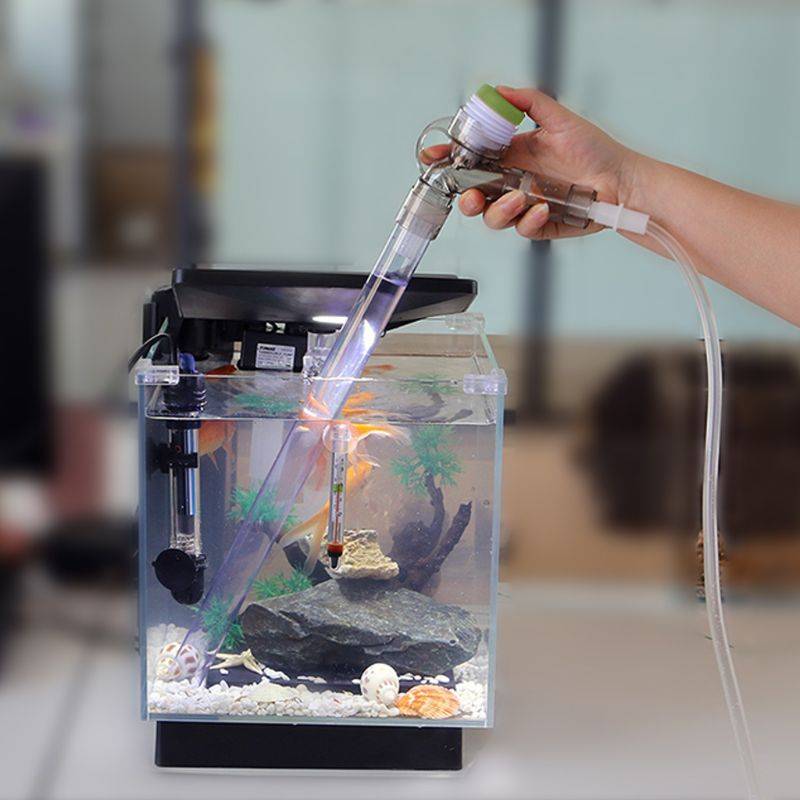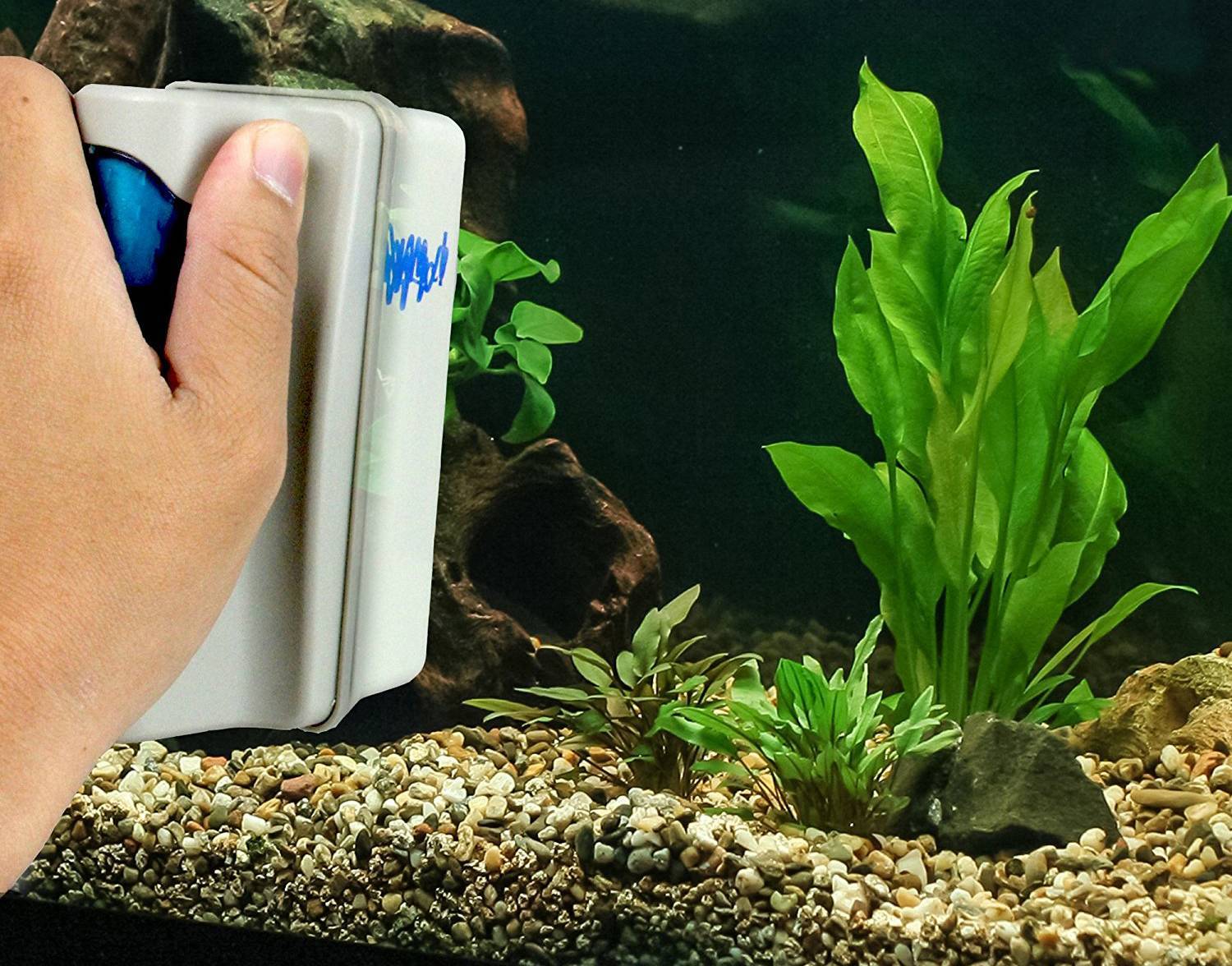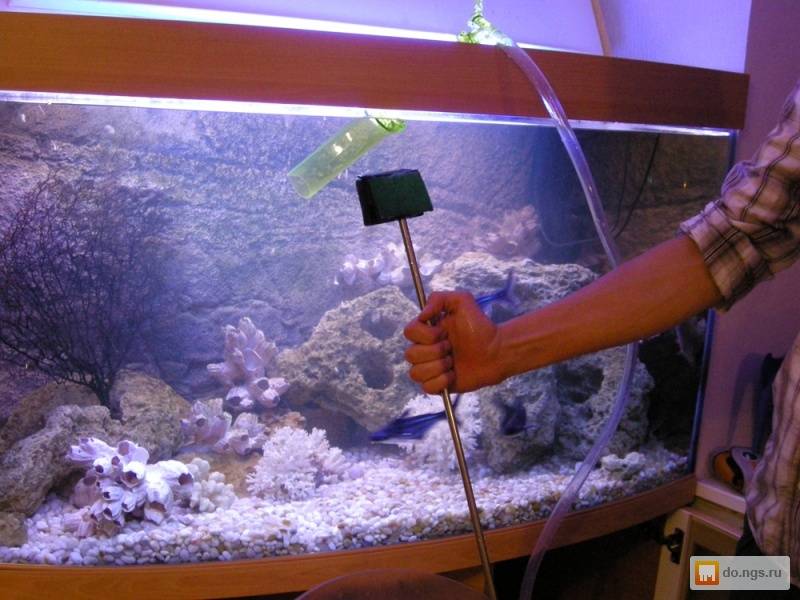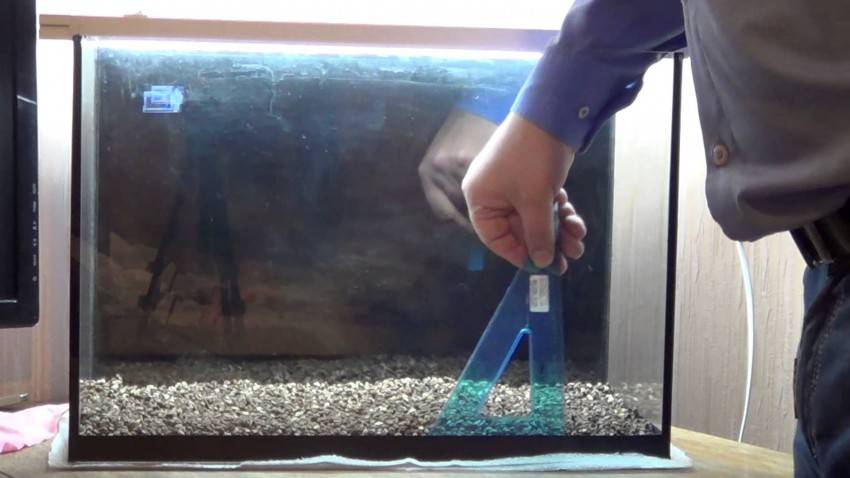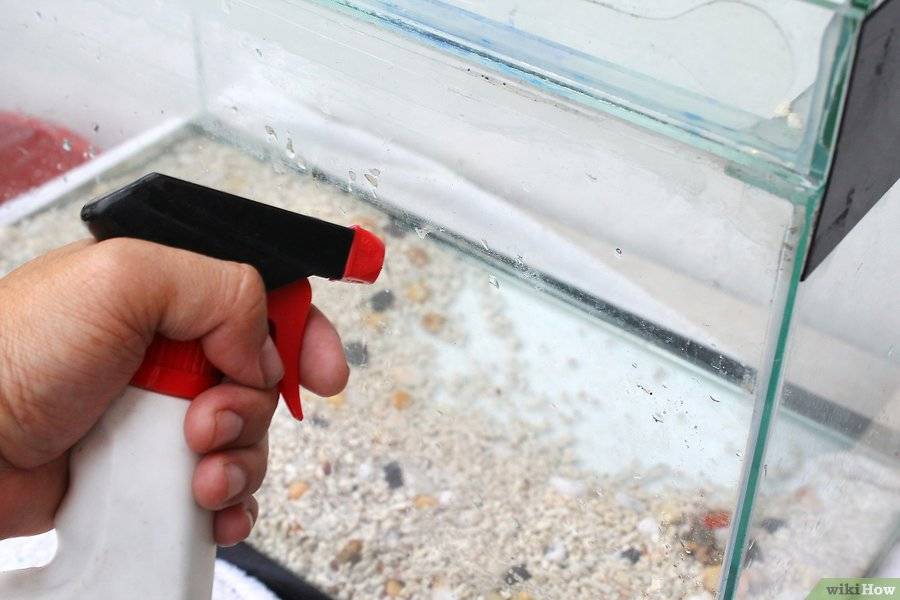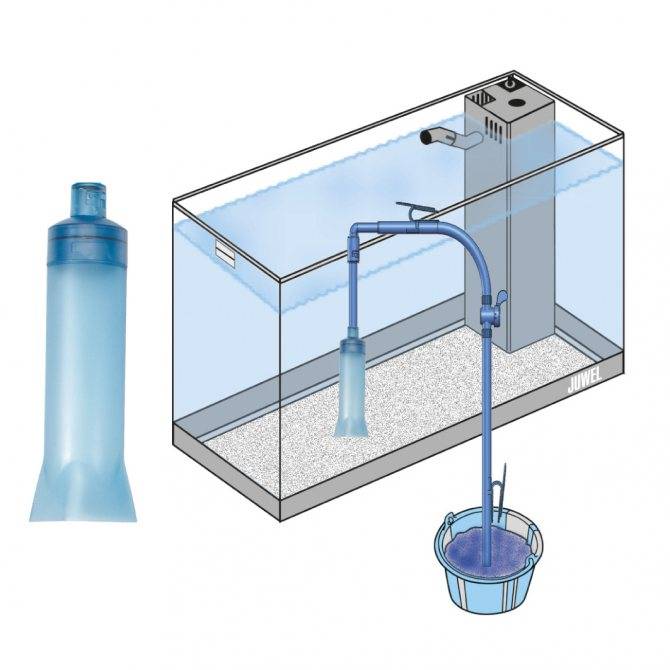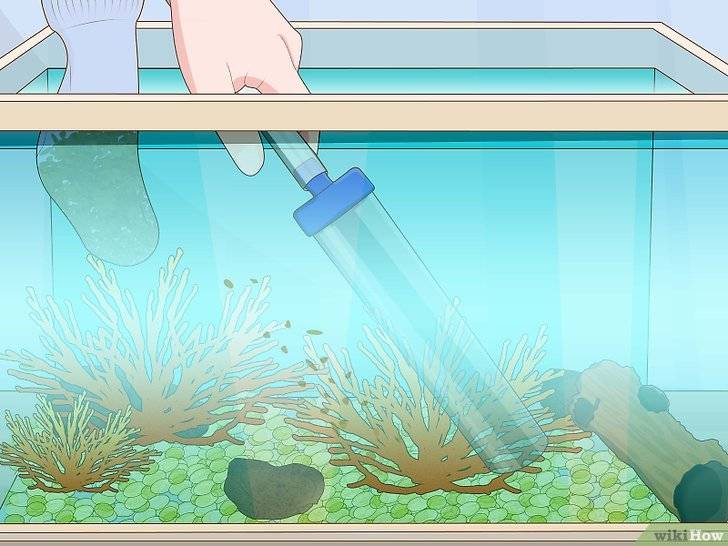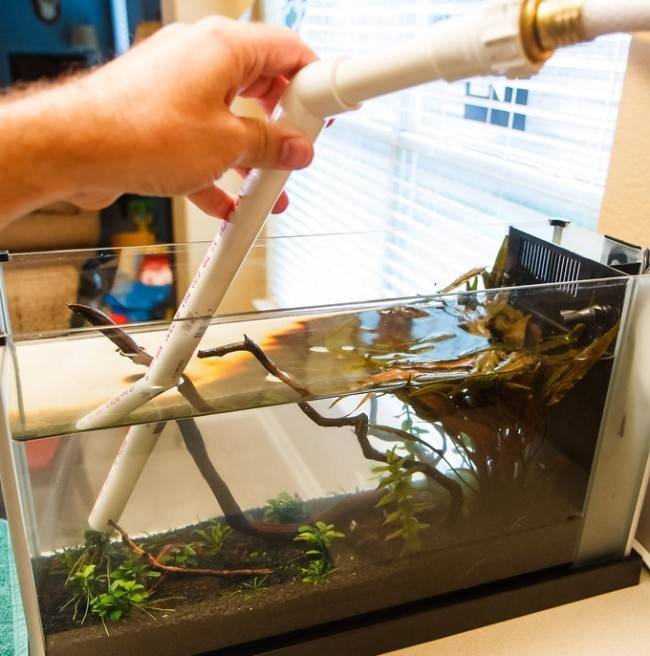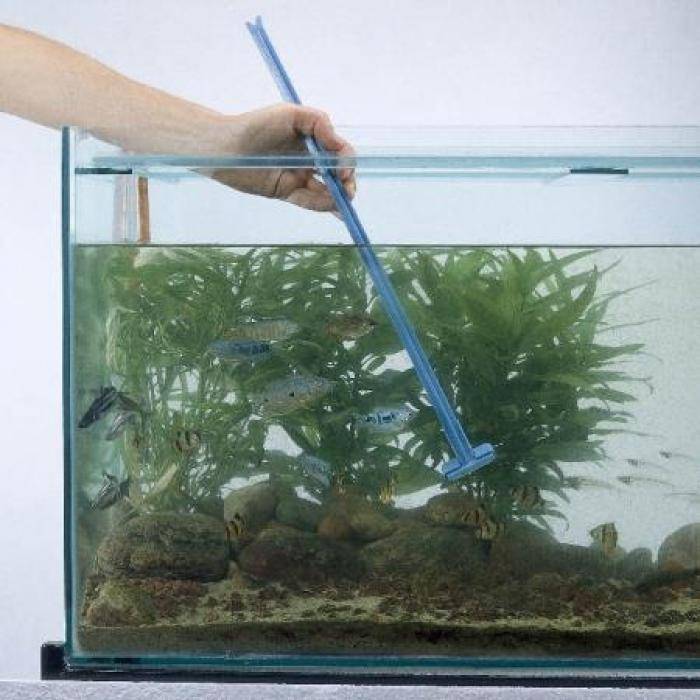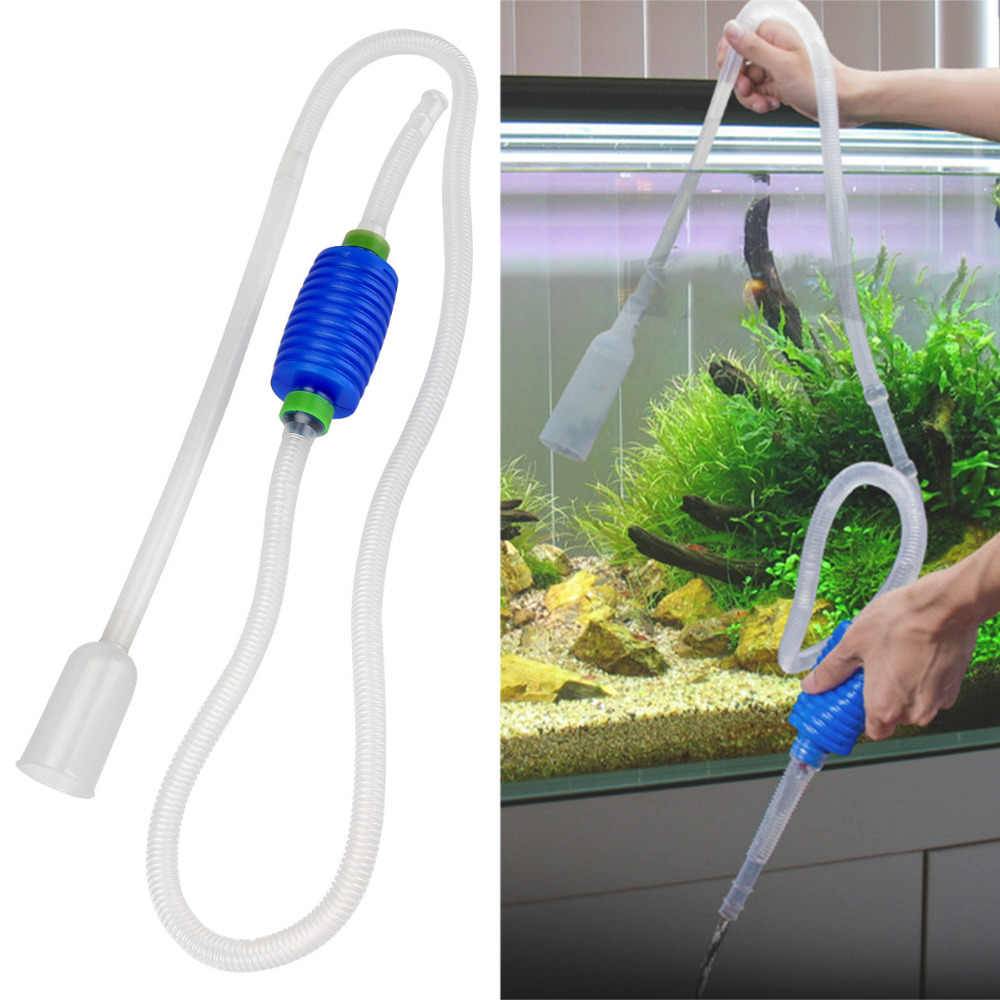Why clean your aquarium!
Clean is necessary primarily to remove food residues, the life of fish and other inhabitants. These products settle at the bottom, accumulate there, if they are not removed in a timely manner, then they can cause deterioration in water quality. And the quality of the water in the aquarium is known to directly affect the health and longevity of your pets.
Of course, if you have living plants with a developed root system in your aquarium, then they can very well process all the remains from food, fish life, etc.
How often should the aquarium be cleaned
The frequency of cleaning the aquarium is primarily determined by the number of pets, the presence of plants, filters, etc. The average frequency with which it is optimal to clean the bottom with a siphon is once a week. If you are a beginner in the aquarium business, then this indicator will suit you optimally.
The second question is what to clean! Siphon - once a week is necessary in almost all aquariums with fish. However, you can clean the filter at different intervals. For example, if you have an internal filter installed, then it would also be optimal for it to clean the sponges once a week. For an external filter, this procedure can be carried out every few months. Depending on the model and the number of fish in the aquarium, cleaning can be done every 2-3 months.
Frequency of cleaning the aquarium
There is no universal norm establishing the frequency of cleaning a reservoir. The frequency of the procedure depends on several factors:
- The number of plants and fish;
- The volume of the reservoir;
- Feeding frequency;
- Lighting;
- The location of the aquarium;
- The amount of decorations and artificial plants.
But you can understand that it is time to clean the aquarium by these signs:
- A plaque appeared on the walls, appliances and decorations.
- The filter and aerator did not work at full capacity, they are clogged.
- The water has changed color (cloudy).
- Even a small movement of fish near the ground began to lead to the appearance of "dust".
- The water parameters have changed.
If you find at least one of these signs, you need to start cleaning the aquarium. But there are several procedures to help solve problems:
- Change of water. Usually it is done once every 7-14 days. 30-35% changes at a time.
- Cleaning the walls of the aquarium. Weekly.
- Checking and adjusting the operation of service equipment (filter, aerator, lamps, etc.). Every month or as needed.
- Disinfection of decor items. Every 10 days.
- Complete replacement of water. This is done only when absolutely necessary, as it leads to a restart of the aquarium. Performed in case of progression of infection, mass death of fish or plants, breakdown of the reservoir.
How to properly wash your aquarium
Proper cleaning is carried out in compliance with a strict sequence, breaking which you will not be able to achieve the desired effect. For safety reasons, disconnect all electrical appliances except external filters before cleaning. It is recommended to refrain from feeding the fish 2 hours before washing.
We clean the walls
If there is lime or green deposits on the walls, cleaning is carried out with a special scraper or similar wipers. It is not necessary to drain and remove fish (unless you use sharp blades for cleaning). The procedure should be carried out carefully, in order to avoid grains of sand falling on the glass, which can scratch it.
For light contamination, it is sufficient to wipe the aquarium with a sponge. Pressing the sponge firmly against the glass, you need to draw it down to the ground, and then also slowly move it up. After rinsing, repeat the operation until the glasses are completely clean.
It is not necessary to remove algae washed off the walls: some will be eaten by the fish, the remains can be removed when changing the water.
The more regularly the procedure is performed, the thinner the plaque and the easier it is to get rid of it.
Caring for the bottom in the aquarium
The substrate needs to be cleaned of excrement and feed residues. A siphon pump will help in this matter. It is enough just to walk them along the bottom. You should work with the siphon carefully so that fish, plants and soil do not disappear along with the dirt. It is better to pick up a white bowl for draining, so as not to miss a fish accidentally caught in the hose. You should start cleaning by moving from more dirty places to the cleanest ones.
If sand is used as a substrate, it is better to give preference to a pumping hose so that the sand is not sucked in (keep the pump at a distance of 2.5 cm from the bottom surface).
The soil without a siphon can be washed by stirring in a bucket, under the strong pressure of running water, after moving the fish to a separate container. The soil is washed until the water becomes clear. It is not recommended to flush the soil if the aquarium is densely populated with algae, as this will damage their root system.
Changing the water in the aquarium
For replacement, you will need to remove a third of the total volume of stagnant water, so as not to harm the established microflora. The amount of water to be replaced varies depending on the degree of pollution and the conditions of the aquarium (the number of fish, plants, filter power and the whims of fish for cleanliness). Complete removal of water is carried out in extreme cases.
After the old water is drained, new water, separated or filtered from chlorine, is added with a temperature close to the temperature of the aquarium.
Cleaning the filter
Cleaning the filter must not be combined with washing the decorations and replacing them with water. A sharp jump in the water balance can harm the inhabitants of the aquarium. The filter is disconnected from the network, taken out of the aquarium and disassembled. The external filter is gently passed with a toothbrush so as not to wash off beneficial bacteria. When rinsing the filter, a foam insert is taken out and rinsed under the pressure of running water.
Do not use detergents and wash in hot water. This will kill the flora formed in the filter.
Vegetation processing
Plants and algae are carefully examined for defects. If yellowed and rotting leaves were found, then a haircut is necessary. When weeding root species, one should not raise the bottom mud.
Cleaning of gravel, stones and decorative items
Aquarium decorations also need to be cleaned, as plant spores can be located on their surface. Large pebbles, shells, houses and castles should be taken out and rinsed under running water. Remove dirt and algae with a sponge. In case of stubborn dirt, soaking the product for 15 minutes in bleach in a 9: 1 ratio will help. After the whitening procedure, rinse the cleaned decor with boiling water and rinse well with running water. It is advisable to allow it to dry well before returning.
Cleaning the aquarium outside
The outside of the aquarium is cleaned using sponges or ragsmoistened with water. All external surfaces of the aquarium are wiped, from the lamp to the lid. The glass is washed from drops, fingerprints, and then wiped with a dry cloth.
We clean the walls
The first step is to consider how to clean the walls of the aquarium.
Be sure to turn off all electrical equipment!
Absolutely in any aquarium, over time, plaque forms, both calcareous - from poor-quality water, and green - in the presence of algae. It is with such not very pleasant factors that we will come across sooner or later. Internal pollution makes glass and water cloudy, and as a result, unsuitable for the life of your pets.
First, wash your aquarium glass thoroughly.
What is needed for this
First of all, you need to learn how to properly clean the aquarium, because the appearance of the fish house depends entirely on this.
This can be done using the following tools:
- special scrapers with a metal blade
- nylon washcloths
- regular kitchen sponges
Let us tell you a little secret: "You do not need to wait until the walls are covered with a cloudy coating."
Periodicity
Make it a rule to wipe your aquarium glass at least once a week, even if it looks clean at first glance. This procedure is much easier than washing the cloudy glass two or three weeks ago.
- If you decide to clean the walls of the aquarium without taking out its inhabitants, then the use of any detergents is strictly prohibited.
- If you are planning a planned cleaning with the relocation of its inhabitants, then for this you can use a special washing sample of a potassium permanganate solution.
It is with the help of these rules that you can easily wash off plaque of almost any complexity.
How can you wash
An empty aquarium can be rinsed using suitable household chemicals such as soap, whiteness, domestos or baking soda. Remember, the stronger the chemistry, the more difficult it is to wash out the remains of the aquarium. Do not allow chemical residues to get into the water of a running aquarium. This threatens the death of fish and plants.

The aquarium is washed once, after purchase and immediately before launch. There is no need for regular flushing of the aquarium itself.
Aquarium equipment and glasses are cleaned with weekly aquarium maintenance. The aquarium can be washed with any household detergent: soap, comets, domestos and similar cleaning agents. Most often, the aquarium is washed with soap or baking soda.
I prefer to rinse out the aquarium with baking soda as it washes out easily and is not harmful if it gets into a neglected aquarium.
Can I wash with pure baking soda? Of course no. The aquarium is washed with a soda solution so as not to scratch the glass of the aquarium, which is important for an acrylic aquarium. A solution of soda is prepared at the rate of 2 tablespoons per liter of water.
Prefer gel formulations when using household detergents. This will protect the aquarium glass from scratches.
How to wash
Nothing complicated. Take a clean household sponge and your chosen detergent. The detergent is applied to a sponge and wiped off the aquarium. After wiping, the aquarium is thoroughly rinsed to remove residual detergent and left to dry. You can do without using a sponge, if the aquarium does not involve stubborn dirt.
Now about how to wash and clean aquarium equipment, glass, soil and decorations.
The limescale that remains on the glass of the aquarium as the water evaporates in the form of a white strip around the perimeter of the aquarium can be easily washed off with a sponge. Green, brown and black spots are washed off the glass of the aquarium with a sponge, removed with a special scraper or toothbrush. Be careful when using a scraper. Grains of sand entering the scraper blade will cause scratches.
The appearance of a plaque other than limestone indicates that the biobalance in the aquarium is disturbed. By removing plaque from the glass of the aquarium, you remove the effect, not the cause.
We launder the soil
Remember, the aquarium soil is washed only at the first laying when starting the aquarium. In other cases, the soil is cleaned with a siphon, removing the accumulated dirt and waste on the soil, eliminating siltation.
Do not remove or rinse soil from the aquarium during simple maintenance and normal aquarium conditions.
We wash the filter
The filter is removed from the aquarium. Filters and filter sponges are rinsed in aquarium water or running tap water. Do not rinse the sponges before draining the crystal clear water. It is enough that the fillers are not clogged with dirt.
We clean artificial decorations
If the decoration can be removed from the aquarium for rinsing, remove it. Decorations are washed under running water to remove dirt and plaque. Otherwise, drain some of the water from the aquarium into a prepared container, and clean the decoration in the aquarium with a sponge or scraper.Also, when rinsing the decorations, a toothbrush is also used to clean difficult areas.
By the way, the toothbrush takes pride of place among aquarium accessories. The effectiveness of the toothbrush in cleaning an aquarium has been proven by generations of aquarists.
Concluding the article, let me remind you: the only reason for completely washing an aquarium that has already been put into operation with the deposition of fish and plants is an outbreak of an infectious disease in the aquarium. In all other cases, it is enough to wipe the glass of the aquarium, clean the soil and rinse the decorations. A new aquarium, in the absence of contamination, is rinsed with running water from the tap, and then populated.
What else needs to be cleaned in the aquarium?
A good filter plays an important role in the aquarium. It keeps it clean and comfortable for your pets. From time to time, the filter also needs to be put in order: wash it and replace the cartridges.
In order to properly clean the device, follow these instructions:
- Take out the filter.
- Remove the foam insert from it.
- Rinse it with running water.
- Take a toothbrush.
- Wipe the rest of the parts with it.
- Rinse under running water.
- Collect.
- Place back in the aquarium.
There are also the so-called nurse fish, which are not only pleasing to the eye, but also useful. These fish have an unusual mouth structure, which allows them to remove plaque from the walls of the aquarium, to clean the bottom and plants from mold. Be sure to add these fish to your aquarium:
- guppy;
- swordsmen;
- armored catfish;
- ancistrus;
- platies;
- mollies.
You will need
- - aquarium glass scrapers;
- - magnetic scraper;
- - sponge;
- - a glove (mitten) for the body;
- - a hose with a tip and a pear;
- - Toothbrush;
- - brush;
- - baking soda;
- - Whiteness whitening agent.
Instructions
Select a method of cleaning the glass Green deposits on the sides of the fish
... Algae overgrowth takes 1 to 2 weeks depending on the location of the aquarium. Clean glasses as soon as they become dirty. Use an aquarium scraper, a clean dishwashing sponge, glove or magnetic scraper to do this. The choice of these devices depends on the density of the plaque. For example, small blotches of greenery can be easily removed with a sponge. It is very convenient to remove plaque in the corners of the aquarium if you put on a special glove. If the walls are heavily overgrown, use an aquarium scraper. If you do not want to get your hands wet, use a magnetic scraper - this is the best tool for removing algae.
Clean the bottom Sewage accumulates at the bottom of the aquarium, which leads to water spoilage - these are waste products of fish and snails, food remains, rotting plant debris. Remove them with a siphon - a rubber or plastic hose with a tip on one side and a bulb on the other
Collect waste by walking carefully around the plants. If there is a lot of dirt, apply light pressure to the soil to remove old build-ups between pebbles.
Wait until the turbidity settles and repeat the procedure.
Clean the filter Wash it whenever it becomes clogged. If you notice changes in the pumping of water, you should free the sponges from the dirt accumulated in them. Remove the fillers and rinse with plenty of water without using detergents. To restore the free flow of water, clean the filter nozzle from mucus with a toothbrush. Hold it for 2-3 minutes under a strong stream of cold water - this will remove the remaining films.
Clean the decorations walls and bottom, but the scenery also darkens. For the attractiveness of the underwater world, various objects are used: stones, corals, ceramics, driftwood, plastic plants. Cleaning work depends on the decoration material and the degree of soiling. Wipe off green plaque on plastic and unbaked clay with a hard sponge.Blackened snags can be restored to their original appearance by peeling them with baking soda gruel. To do this, take it out of the water and sprinkle it with plenty of powder. After half an hour, clean the white gruel from the surface with a stiff brush and rinse the snag thoroughly. You can remove overgrown algae with a bleach. Place blackened stones, corals, ceramics in a solution (1 part "Whiteness": 10 parts water) of a bleaching agent for 1-2 hours. After that, rinse the decorations in running water for at least an hour until the odor is completely eliminated.
Change the water When cleaning the soil, some of the water was drained along with the dirt. If there are live plants in the aquarium, inspect them and remove any yellow stems. Top up with settled water, remembering that the fresh portion should not exceed 15-20% of the total volume of the aquarium.
In order for your aquarium to delight you and your household for a long time, you need to maintain certain natural conditions for fish in it. This is done with filters, compressors, lighting. But without additional cleaning, the aquarium will quickly become dirty, so you need to clean the aquarium regularly and correctly.
How to remove green plaque: the main subtleties
To quickly wash and clean the aquarium, you must strictly follow the sequence of work. The process consists of several stages. Necessary:
- Remove green plaque from the walls. The first step is to clean the glass surface with a special scraper without draining the water. Use a razor blade for hard-to-clean areas.
- Pump out old water using a pump. To do this, dip one end of the hose into water, and lower the other into a bucket. It's a good idea to get a new bucket that will only be used to clean the tank.
- Clear stones at the bottom of excrement and feed residues. You can remove them using a siphon pump, after taking out the jewelry and decor. Pass the pump over the stones. In the event that you only have sand, you only need to use the pumping hose, keeping it 2.5 cm from the ground. This will prevent the sand from being absorbed. Using a rubber gloved hand or a spatula, gently "loosen" the gravel or sand on the bottom. Thus, it is possible to achieve deep cleaning of the soil, since the particles of the debris in it will rise up.
- Rinse jewelry and decor. These elements also need to be cleaned, as plant spores may be present on their surface. If the elements are heavily soiled and will be difficult to clean, then one of the cleaning methods is to use bleach. You need to leave the products in the solution for 15 minutes, and then rinse the cleaned decor with boiling water.
- Pour in clean, settled or filtered water. Monitor its temperature with a thermometer. After filling with water, wait a few hours for the particles that have risen to settle to the bottom and the water brightens.
- Clean the outside of the aquarium using special detergents, baking soda or wine vinegar. Moisten a sponge or rag with a cleaning agent and thoroughly wipe all exterior surfaces, from the lamp to the glass and cover.
If you maintain a favorable microclimate in your home pond and your fish are healthy, then you can clean the aquarium once a week, replacing 10-20% of the water volume. When your pets are sick, you need to rinse the aquarium more often and change all the water or 50-70%.
Changing the water in the aquarium
How to properly clean your aquarium?
To start cleaning, move the fish out of the aquarium into a separate container and get to work.
We wash the walls
A greenish coating forms on the walls due to algae. They inevitably appear even in the purest vessel. To clean the glass and get rid of green deposits, take a scraper and carefully remove the dirt. In this case, you do not need to pour out the water.If your household does not yet have the necessary tools, you can adapt a clerical knife or a plastic card that has expired. But be careful - foreign objects can leave scratches.
For deep containers with hard-to-reach corners, it is better to purchase a magnetic scraper. It does not scratch the walls and allows you to clean surfaces without dipping your hands into the water. The plaque is removed quickly and easily.
Limescale deposits on the glass of the aquarium are caused by too hard water with a high content of minerals. You can clean it in several ways, including folk:
- Special cleaning compounds. Chemistry should be applied to the walls of an empty aquarium according to the instructions. Remember to rinse thoroughly.
- Lemon acid. Dissolve 20 g of the substance in a glass of water, apply to glass.
- Hydrogen peroxide. Dilute in a ratio of 1 tbsp. l. per 100 ml of water.
- Alcohol. Dilute with water in a ratio of 1:10, mix well.
For a more convenient application of the composition to glass, you can use a spray bottle or thin gauze. Remember that any product must be washed off very carefully: underwater organisms are sensitive to foreign substances.
We clean the bottom
Cleaning the aquarium involves cleaning the bottom. The remains of food, excrement of the inhabitants of the aquarium and other debris settle on it.
First of all, you need to carefully get out the stones and all the decor. Remember that it is highly undesirable to use household detergents. Rinse the jewelry under running water, wipe it off with a sponge. If the items are heavily soiled, soak them in a special product for 15 minutes.
A siphon is used to clean the soil. Devices are of different types, but they have almost the same principle of operation.
Run the siphon tube along the ground, starting from the most contaminated places. Pour the drained water into a bucket. Check for any small fish caught in it.
The siphon is not used if shrimps or other small animals live in the aquarium - they are easily injured. Also, the siphon cannot be used on soils in herbalists - you can damage the roots of plants.
If this thing is absent on the farm, you can get the soil, put it in a bucket and rinse it under running water. Brush stones and shells overgrown with silt and algae with a toothbrush.
Green areas also require special care. Spoiled and damaged leaves must be cut off, as well as overgrown ones. There is no need to breed "jungles" - they will prevent the fish from moving freely.
Cleaning the filter
It is recommended to clean the aquarium filter once a month. But you should not rinse it too thoroughly - you can destroy beneficial bacteria, thereby disrupting the biological balance in the aquarium. Disassemble the filter and gently clean it with a toothbrush, wash out the dirt that has settled in the cracks. Rinse the elements in aquarium water - this way the microflora is preserved.
A device that acts as a mechanical filter (i.e. ceramic rings, filter fibers, or a sponge) must be gently rinsed to remove debris and reinstalled. After general cleaning, you need to wait a little before cleaning the filter: a certain amount of beneficial bacteria remains in it, which will help maintain the biobalance in the renewed reservoir
After general cleaning, you need to wait a little before cleaning the filter: a certain amount of beneficial bacteria remains in it, which will help maintain the biobalance in the renewed reservoir.
Fill in water
You should not replace all the water with every cleaning - this upsets the ecological balance, and it will be difficult for the inhabitants of the aquarium to adapt. General cleaning is carried out only in cases of extreme necessity - for example, during epidemics. New water should be allowed to stand for several days so that chlorine and other harmful substances evaporate from it, and only then pour into the aquarium.
You can replace a little water at a time, or you can replace half of it - it depends on the degree of pollution, population density, filter power and other factors. The presence of living plants plays an important role - they are often a kind of natural filters.
With regular maintenance, about 25% of the water is replaced. This is the best option for keeping clean.
The procedure for cleaning algae and decorative elements
In order to make the aquarium unique and create comfortable conditions for its inhabitants, various decorations are used - shells, large stones, ships, houses, artificial algae. These items are also covered with algae and traces of fish activity, therefore, they require regular cleaning.
To maintain order in the tank, periodically weed live algae and remove damaged plant parts
The procedure for cleaning the decorations:
Remove items to be cleaned from the reservoir.
Rinse the items with warm running water.
Use an old toothbrush and baking soda to remove plaque
It is important to thoroughly wash all surfaces, remove plaque and dirt.
Rinse the decorations with clean water and place in the tank.
Cleaning without a siphon
In the natural environment, the ecosystem has a large number of participants: the remains of food and fish excrement are eaten by snails, shrimps and bacteria. But to maintain cleanliness in the aquarium, their owners will have to work hard to keep the fish properly.
Aquariums should be washed carefully and without sudden movements. Remember, interference with the underwater world causes stress among its inhabitants .. Soil cleaning begins with plants and decorative elements
Large pebbles, shells, houses and castles should be taken out and rinsed under running water. Plants and algae are carefully examined for defects. If they have yellowed or rotting leaves, they are carefully removed. When cleaning the bottom of the aquarium, it is best to immediately transplant the plants if necessary.
Soil cleaning begins with plants and decorative elements. Large pebbles, shells, houses and castles should be taken out and rinsed under running water. Plants and algae are carefully examined for defects. If they have yellowed or rotting leaves, they are carefully removed. When cleaning the bottom of the aquarium, it is best to immediately transplant the plants if necessary.
If you clean the soil without a siphon, then you can simply rinse it under running water. In this case, the fish should be transplanted into a separate container (basin, bucket).
This procedure looks like this:
- The soil is taken out of the aquarium.
- Poured into a bucket.
- It is rinsed at maximum pressure until all the dirt is washed out.
- It is best to wear a rubber glove and stir the soil in the bucket periodically.
Do I have to wash my aquarium?
Many people say that to clean an aquarium at home, it is enough to have "orderlies" fish and snails. But in reality this does not always help, and sometimes it clogs up the aquarium even more. Therefore, the vessel in which your pets live will have to be washed regularly. How often you do this depends on the size of the tank. Vessels with a volume of more than 200 liters are washed one time in half a month, and small ones will have to be cleaned twice a week.
Preparing a new aquarium
Once you get your aquarium and fish life support, you need to get it ready to move in.
Before washing a new aquarium, it is necessary for the silicone odor to disappear for a while. at room temperature... Then rinse the glass tank with warm water and baking soda. Then pour half the volume of water into the container, install the decorations and filter. At the end of the day, add the other half of the liquid so that about 5 centimeters remain from the top edge of the aquarium. The next step in the container can be populated with fish.
Weekly cleaning of the aquarium
Since cleaning an aquarium at home for fish is a lot of stress, try not to make sudden movements when doing it, so as not to scare the aquatic inhabitants even more. But they should not be transplanted into another container either, as this is an even greater inconvenience for the fish. First of all, turn off all electrical appliances that are in the aquarium. Remember, no matter what part of the artificial mini-reservoir you clean, even with the most severe pollution in no way use detergents.
Let's figure out how to clean glass in an aquarium. Cleaning should start from the walls of the vessel. There are special tools, the most convenient of which is the magnetic scraper, since with it you don't even have to put your hand in the water. Drive one part of the tool along the outer wall, and the other will move along the inner wall. In particularly dirty areas, you can use a razor blade.
If your aquarium is made of organic glass, then the above devices are not for you. They can scratch the glass of such a vessel. In this case, kitchen or nylon washcloths are suitable for you.
After you clean the glass of the fish tank, move on to washing the decorations. Use scissors to remove any yellowed leaves from the aquatic plants. As a result, turbidity will appear in the container.
To remove it, wait 10 minutes for it to settle to the bottom, and gently wipe the decorations with a clean sponge.
Let's find out how to clean the bottom of an aquarium. If you turn the soil and bubbles rise from the bottom, this is a signal that it is time to clean the bottom. For this, a special siphon is used, which can be bought at any pet store. But if you do not have the funds or the ability to purchase it, you can make such a siphon yourself:
- take a hose with a length of three times the height of the aquarium, with a diameter of 15 mm;
- put an ordinary watering can on its end;
- lower the watering can to the bottom and press it against the ground, and on the other side of the hose, suck water into a bucket or basin.
In this way, you will remove all the dirt and excess organic matter from the bottom of the container. But during this procedure, water will drain, make sure that you do not lose more than 1/5 of the total volume of liquid. For convenience, make a mark on the outer side wall.
Now let's move on to cleaning the filter. Wash it in the last water you drained with the siphon. It will have the least turbidity and sediment. Rinse all parts and clean them with a toothbrush or cotton swabs. Then assemble the filter and install it back.
After you wash the glass, filter and decorations, clean the bottom of the aquarium with fish, you can start adding the previously settled water. Change 15% of the fluid every week. If any of your fish is sick, change 50%. Pour water not in the center, but along the side walls of the vessel.
Sometimes a film forms on the surface of the water, you should not worry about this, it is very easy to remove it. Just put a sheet of paper in the water, and then remove it along with the film. Repeat the procedure again if necessary. After the last stage of cleaning - adding settled water, you can turn on the filter and lighting.

